
There are two indicators of autumn starting in Shanghai. My favorite cat June starts sleeping on my lap again, the warmth of my legs turning into an advantage rather than the disadvantage it was during the summer. And Daurian Redstarts showing up in Shanghai – they will spend the winter here. Both the males …

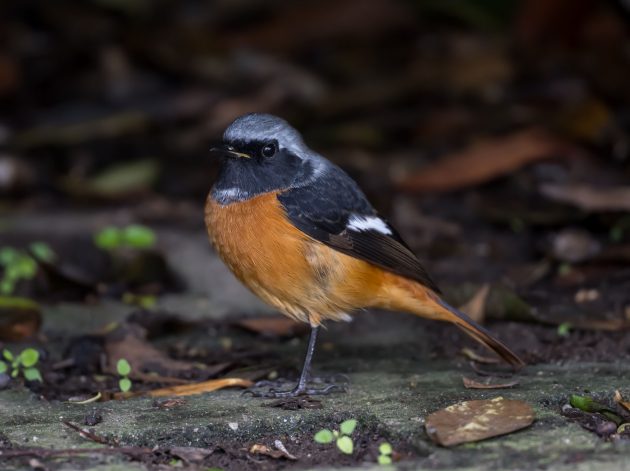
… and the slightly less impressive females.


The Red-flanked Bluetail is another bird indicating the arrival of autumn. In winter, the females (and presumably juvenile males) are everywhere in Shanghai, while the adult males are more difficult to find.


Those readers who mostly scan my posts for music tips will be glad to hear that this post includes at least two of them. The first one is by the Silver Jews, “San Francisco B.C.” – a long alternative bluesy rant about a burglary, an unfaithful lover, and breaking glass coffee tables, with a fantastic instrumental guitar bit somewhere in the middle. Plus some great lines:
I lived with my true love and she lived with me
“Romance is the douche of the bourgeoisie”
Was the very first thing she imparted to me
We had sarcastic hair, we used lewd pseudonyms
It is a bit rare to get photos of the Asian Stubtail so out in the open – it tends to stay a bit more hidden.

Nice to properly see its colors for once.

Its scientific name Urosphena squameiceps sounds like an illness urologists should be familiar with (prescribe antibiotics, maybe?), but the squameiceps just means scaly-headed (though I do not really see that either).

And the Urosphena combines the Greek words for tail and for wedge, so the person who gave the name to the species wanted to both indicate that the species is wedge-tailed and that he received an expensive education which included hours and hours learning a useless but prestigious dead language, Greek.
A quick reminder that the Blue-and-white Flycatcher is a very nice-looking bird. Even the light blue juvenile male is attractive.

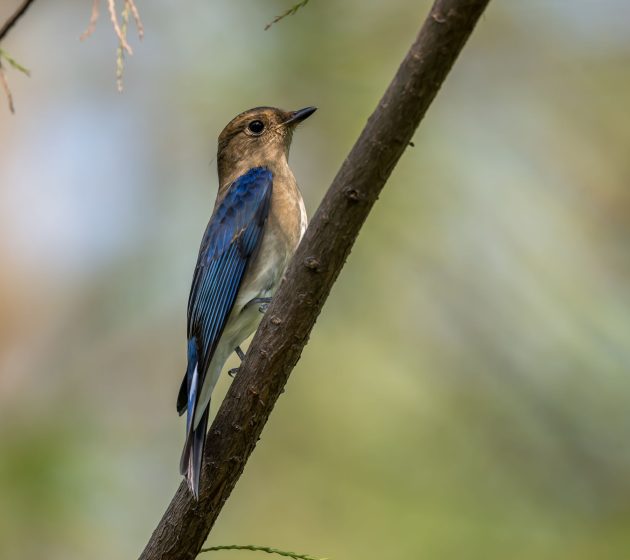
No god-fearing photographer would ever show a photo of a Brown Shrike next to plastic trash. As I am not god-fearing, it is fine for me.


Eurasian Hoopoes are apparently not very choosy with regard to their food – not sure what this is but it reminds me a bit of what I am supposed to eat whenever I visit my Chinese in-laws.


Quite surprisingly, the Cornell/HBW entry on the Eurasian Hoopoe has been updated very recently (July 2024) – even the photos are now in color, no longer in black and white.

Unfortunately, the introduction to the species – while presumably written by the two authors – sounds like it has been written by ChatGPT:

“The Eurasian/African Hoopoe, with its sun-evoking crest and boldly marked plumage, has held an important place in human culture for millennia, variously being despised and lauded in different cultures. In southeastern Siberia, its appearance signifies upcoming tragedy to traditional Buryat cultures, while in ancient Mongolia, it was considered a protector. In Medieval Europe, it was a sinister omen, while today in Israel, the Eurasian/African Hoopoe is the national bird. Whether loved or hated, the Eurasian/African Hoopoe is a mesmerizing and fascinating bird that holds a special place in human history.”

The Eurasian Kestrel very rarely travels to the US – it is afraid of being misidentified as an American Kestrel, and it very much does not want to be in any way linked to a country in which approximately 50% of the population thinks that a Trump/Vance presidency is a good idea.


Grey Herons often look somewhat glamorous and elegant, but as this photo shows, they can also look quite stupid.

Seeing a Grey Nightjar at Nanhui always means it is a good day. For some reason, unlike other species which have a fairly regular timetable, nightjars do not seem to stick much to defined seasons. The iconoclasts of bird migration.

The scientific species name is Caprimulgus jotaka. Now, jotaka is from the Japanese word Yo taka, which means night hawk and stands for the Grey Nightjar, even though it sounds like the name of a sinister, chain-smoking Yakuza boss in a low-budget Japanese movie.
Japanese Tits are heartily tired of being the butt of sleazy jokes. As they rightly point out, they do not only live in Japan and therefore want to be renamed as Asian Tits.

Early October was a good season for Oriental Scops Owls, possibly my favorite Shanghai bird.

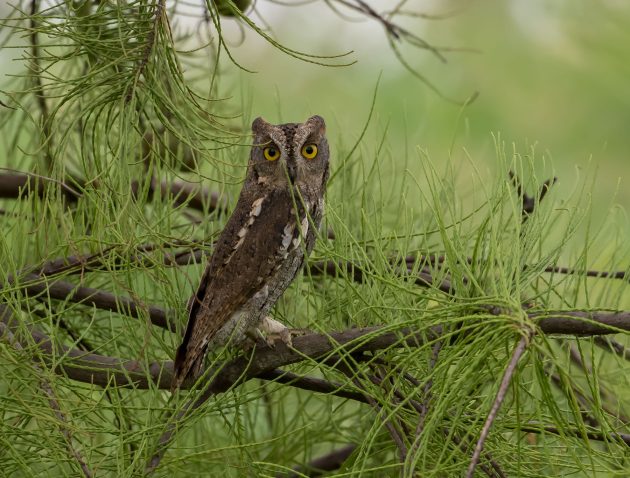
My impression is that in Nanhuis microforests, where the color of the trees is much more like that of the grey-brown than of the reddish morph, this leads to different behavior of the two morphs.


The grey-brown morph sometimes seems to rely primarily on camouflage – it stays relatively open and just assumes it will not be seen.




In contrast, the reddish morph either flies away or hides much deeper in the tree leaves.


Whenever Long-tailed Shrikes or Light-vented Bulbuls see Oriental Scops Owls in the microforests of Nanhui, they protest against their presence.


In some way, this is a bit surprising – according to Cornell/HBW, their prey is more than 95% invertebrates and the rest are geckos and rodents (i.e., not birds).

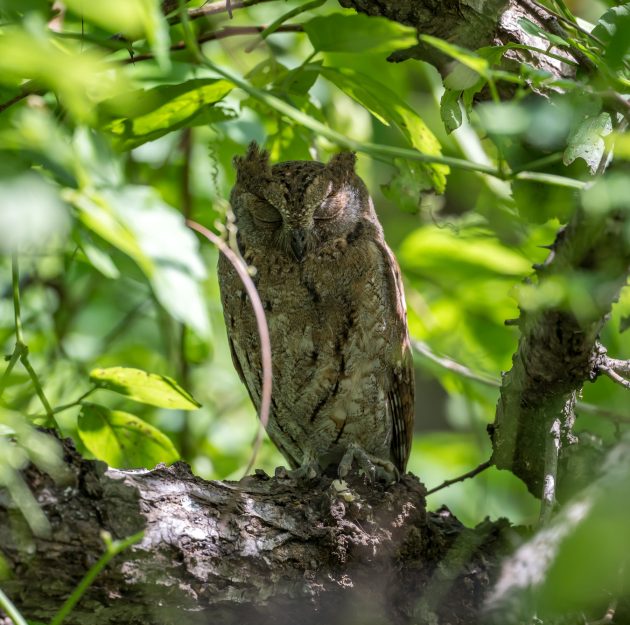

When I showed the photos below to a friend, he remarked “The owls are stalking you”.



Here is a Light-vented Bulbul not currently mobbing an Oriental Scops Owl. Maybe this individual is a bit more intelligent and tolerant and does not immediately think that immigrants eat birds, cats, or dogs.

Here is another owl the bulbul could have mobbed – a Northern Boobook, a bit too shy to yield a fully convincing photo.


Japanese Sparrowhawk: Ditto.

A few days later, a Northern Boobook acted a bit more photography-friendly. Maybe a politician.


While I like snipes, I prefer not to ID them. My App says that this is a Pin-tailed Snipe but feel free to disagree.



Outside of the breeding season, the Red-necked Phalarope does absolutely nothing to deserve its name. Like Truth Social being neither truthful nor social.

Generally speaking, JD Vance would probably not approve of Red-necked Phalaropes due to their reversed gender roles. Females are larger than males and compete to win mates, and the males do all the incubation and care for the young.


Still, JD should appreciate that this is still better than having no kids at all (childless cat ladies and gentlemen).

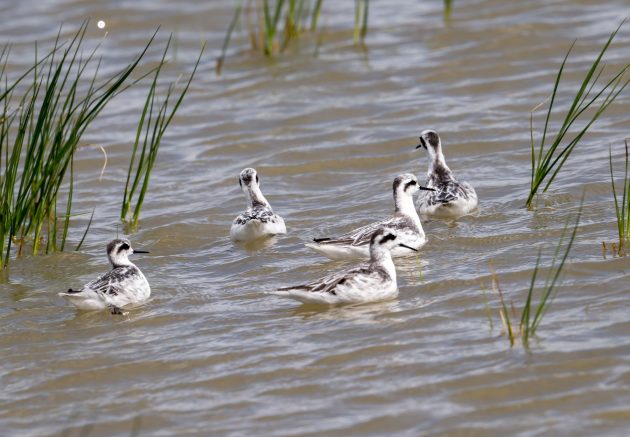
“Hole in My Heart” by Blitz Vega sounds like Graham Coxon sings it, and he could have also written the song – but I looked the band up, and the members include ex-members of The Smiths (not Morrissey, thank god) and The Happy Mondays (not Shaun Ryder). On Spotify, the band has about 14,000 listeners this month, so the attraction of these ex-band members may be somewhat limited. Still, a good song.
A recent research paper (2024) was published on White’s Thrush. It covers satellite tracking of a White´s Thrushes from the Ural Mountains, Russia, to central Mongolia.

The researchers used satellite transmitters to study the migration of two White´s Thrushes (question from me: are these transmitters so expensive? If not, why only use 2?)

Sadly, the abstract of the research results seems to indicate that the whole exercise was pretty much in vain:

“One of the devices transmitted during spring and the breeding season (May to September) in the following year from the Khangai Mountains of central Mongolia, 3000 km southeast of its former breeding season site. Based on the combination of lack of accurate locations, potentially unsuitable habitat, unusual behavior, and unusual location outside of the known breeding range we consider it most likely that the bird died there during migration, while the transmitter continued to function. No data on migration routes or non-breeding areas were received“.

Next time, buy a few more transmitters. Maybe ask for donations on Kickstarter?

Another interesting question: apparently, the two birds were trapped in 2019, so the data collection should have been finished no later than 2020. Why is this only published in 2024? In fact, it has not even officially been published yet – the information only is marked “This is a preprint and has not been peer-reviewed. Data may be preliminary.”

While White’s Thrush is probably named for one of the better figures in the history of ornithology – Gilbert White was an English naturalist and ornithologist who stressed the importance of observation – the Chinese name Hu ban Di Dong – “Tiger-stripe Thrush” is better.

After only seeing an immature male Siberian Thrush in September (agism?), October brought an adult male, which has a much more compelling design.

Some more thrushes: Eyebrowed Thrush …


… Japanese Thrush (a bit late, my dear, aren’t you?) …


… and the somewhat undermarketed Grey-backed Thrush (grey is not really the most notable color of the species).

The female Taiga Flycatcher looks like a male of the same species that has been washed too often, or at too high a temperature. Or is this a sexist remark?

The scientific name Ficedula albicilla is not particularly accurate – albicilla means white-tailed.

I am happy for this Oriental Magpie-robin not to own a mirror. Molt must be hell.

In this season, the Rufous-tailed Robin rarely sings, so its scientific name Larvivora sibilans (sibilans means whistling) is not so easy to understand.

The Mugimaki Flycatcher got its name from a few Japanese words – mugi means wheat or barley, maki means sowing. Apparently, in Japan, this flycatcher is seen mainly in the autumn when the farmers sow wheat and barley (source: Cornell).


For some reason, I am still surprised whenever I see a Common Kingfisher on an ocean beach, as I tend to think of them as birds of lakes and rivers. But apparently, they can do both. Which – even though I have no desire to ever watch the movie “Blues Brothers” again – reminds me of the joke in said movie: a bartender claiming that they have both kinds of music in their pub, “We got Country and Western!”

While looking for Spoon-billed Sandpipers (separate post!) and Dunlins (separate post!), I saw a few other waders:
The Grey-tailed Tattler (looking a bit sinister as usual, maybe because it is listed as Near Threatened) …

… or because it has to spend part of its life on garbage islands …
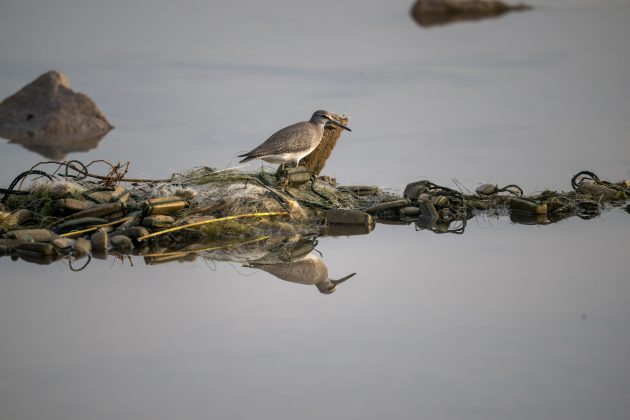

… the endangered Siberian Sand Plover (which Cornell seems to think is underrated: “The Siberian Sand Plover, observed on its wintering grounds, is but another plover foraging on tidal flats, undistinguished in appearance and behavior. A visit to its breeding grounds, however, imparts a rather different impression”) …

… Common Ringed Plover (about which Shanghai birders were much more excited despite the “common” in its name and its Least Concern status – but it is rare in Shanghai) …
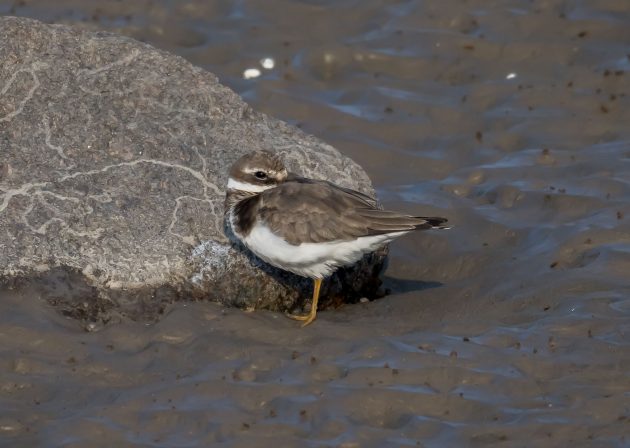

…. Grey Plover …


… Broad-billed Sandpiper …
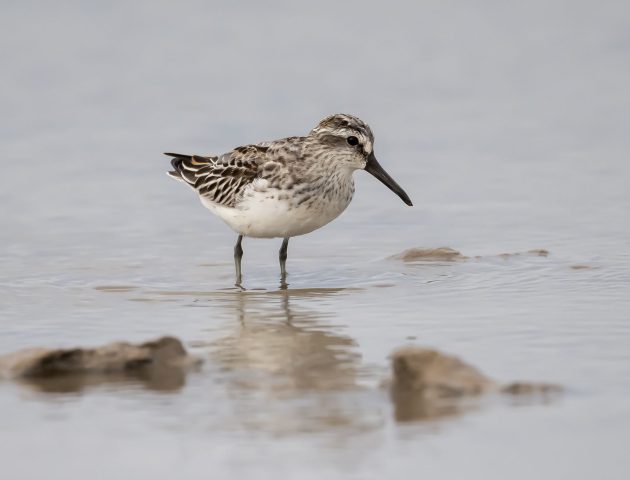
… Kentish Plover …


… Red-necked Stint …

… Common Greenshank …

… Sanderling …

… Wood Sandpiper …
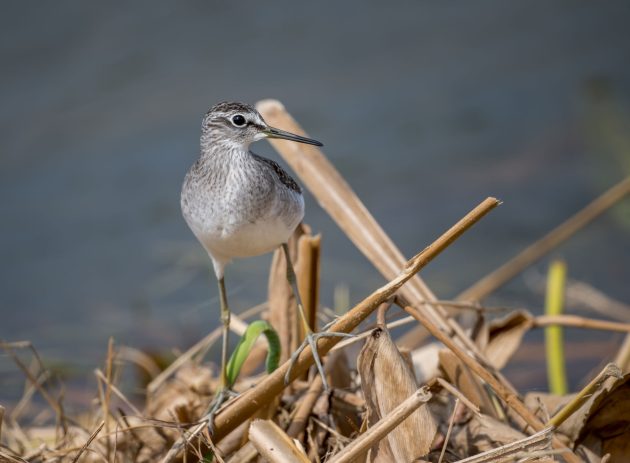
… and Oriental Pratincole (already looking a bit shabbier than in full breeding plumage, or perhaps these are juveniles – you can try figuring it out based on the information here).













Do NOT google Asian Tits! Beautiful pictures – even the rubbish looks good.
Wow…great work
As NanHui is too far from my home in Shanghai (I know this should not be an excuse), I am waiting for the monthly post of Kai and it is always full of information (with links to sources) and I am not talking about the photos which are always vibrant. It transports and takes you along in the micro-forests, hoping to observe the Nothern Boobook and Asian Stubtail among others this month. Thanks for the great read as usual.
Shanghai birds in October are a lot more impressive than Suffolk birds in the same month. I’m envious.